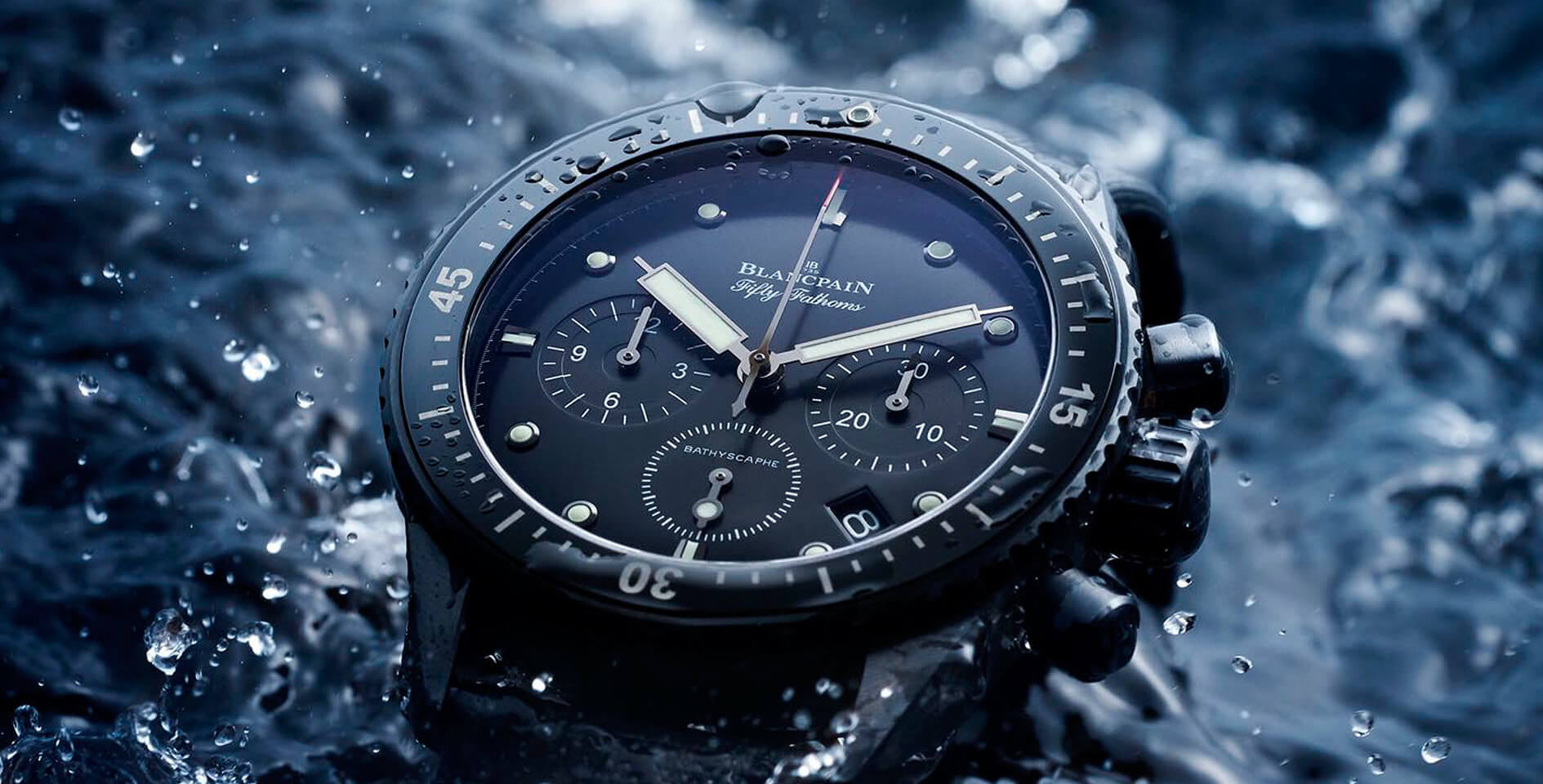
In our post about water resistance we explained to you why it may be better not to wear your luxury watch labeled “50m water resistant” on your next dive. Today we will look at how you can protect your watch from water damage.
1. Let the watchmaker check your watch for water resistance every year. Over time, even quality seals can become brittle and should therefore undergo regular inspections. Even after a fall or an impact an inspection is recommended to ensure the integrity of the seal.
2. Before you jump in the water, you should always check whether the crown and the pushers are closed. Under no circumstances should you manipulate the crown in the water. For watches with a screw-down crown, you should push down the crown and then screw it in tightly.
3. Never expose your watch to extreme temperature fluctuations. If you decide to take a dip in the cold pool after extensive sunbathing, this may cause serious damage to your watch.
4. Protect your watch from dust, grease and dirt, as this affects the material of the watch case. At best you should clean your watch periodically, but never use chemical cleaning detergents.
5. After wearing your watch in salt water it should subsequently be rinsed with tap water in order to prevent any damage.
Please notify me when the watch is available again!
Questions regarding this watch?
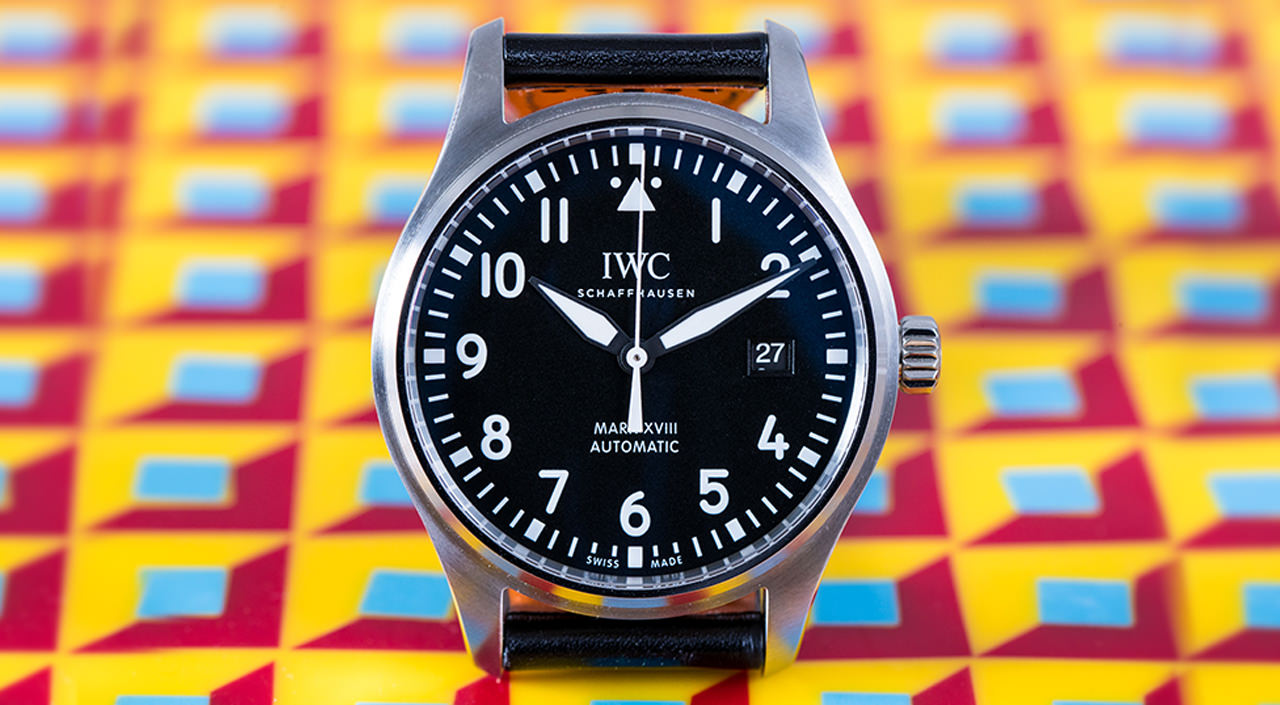
Even though the Austrian writer Marie von Ebner-Eschenbach once noted that even a stopped clock gives the right time twice a day and can look back on a long series of successes after a number of years, the results of modern watches are, however, significantly better. But what are the points to be observed when handling your watch in order to be able to enjoy your timepiece for as long as possible?
Proper Storage
As for storage of your watch, the following applies: Dust is the enemy. While quality watches basically don’t let any dust in, finest particles cannot be 100% prevented from getting inside the watch. It is therefore recommended to store the watch in a box, preferably in the original packaging box. In case you own a quality automatic watch, the purchase of a watch winder is recommended. Not only will it protect the watch from dust, but keeps your watch ready for use through permanent rotation. This is particularly important for watches with intricate complications, in order to prevent the mechanism from literally rusting and having to invest heaps of money in repairs later. Under no circumstances should you store your watch on a loudspeaker or a refrigerator. The magnetic fields they generate can occasionally be quite strong so in the worst case they might damage the mechanism of the watch. Apart from a largely dust-free storage, the humidity within the rooms your watch is stored in should not be too high. Furthermore, bright sunlight and extremely high or low temperatures (below 0°C (32 F) or above 60°C (140 F)) should also be avoided.
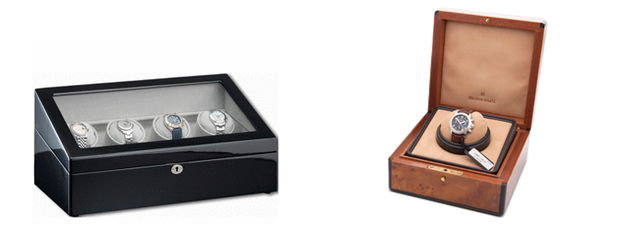
Careful handling in everyday life
Although most manufacturers claim that their timepieces can be worn while playing sports or working in the garden, in case of a precious precision timepiece it’s something that simply doesn’t make sense and can’t be recommended. Even more robust calibers and casings can be affected by severe shocks and the sensitive mechanics inside the watch may be damaged. Therefore, when in doubt, it is recommended to take the watch off or leave it home, rather than having to fret about scratches on the casing or a damaged movement.
Water and your watch
Virtually every watch has the label “wasserdicht”, “waterproof” or “étanche”, but what does this mean for handling your beloved timepiece? The decisive factor, to what depth a watch is waterproof, is the water pressure the watch can be exposed to. By rule of thumb a watch is suitable for watersports from 100 meters (10 ATM) and for diving from 200 meters (20 ATM) Please also note, that water resistance may decline over time, and therefore it´s advisable to ask an expert before you take an older watch into the water. If you watch is sufficiently waterproof, the crown must be carefully screwed tight beforehand or pushed into the neutral position. The pushers of a chronograph should never be operated underwater. For more information about this topic, please read How to Interpret Water Resistance Properly and Tips for Handling Watches Close to the Water.
Cleaning your watch
If your watch is waterproof 3 ATM (30 meters), you can use a damp textile fiber cloth, and for coarser dirt or residue which is difficult to reach use a toothbrush and soapy water. To prevent residues in the latter case, you should subsequently dry the watch with a cloth. A metal, rubber or fabric strap can of course be cleaned along with the casing, while a leather strap should be removed beforehand. In any case, the direct contact with chemicals should be avoided. Therefore, you should also forego cleaning detergents and solvents, as these may in fact reduce the surface tension between the casing and the glass and thus may cause water to percolate into the casing.
Regular service
The mechanics of a watch “lives”. Balance, anchor and co. are constantly moving, and wherever parts are moving, there will be at least minor signs of wear. But there is no cause for concern: a quality watch will usually be a lifelong companion, but much like a car or a high-quality musical instrument, there should be regular maintenance. It is therefore recommended that every 5 to 10 years – in case of significant deviations in accuracy even before that – you have a full service carried out by a professional watchmaker. There your timepiece will be dismantled, cleaned and oiled with a special protective lubricant. This reduces the friction between the individual parts and subsequently increases the accuracy of the watch.
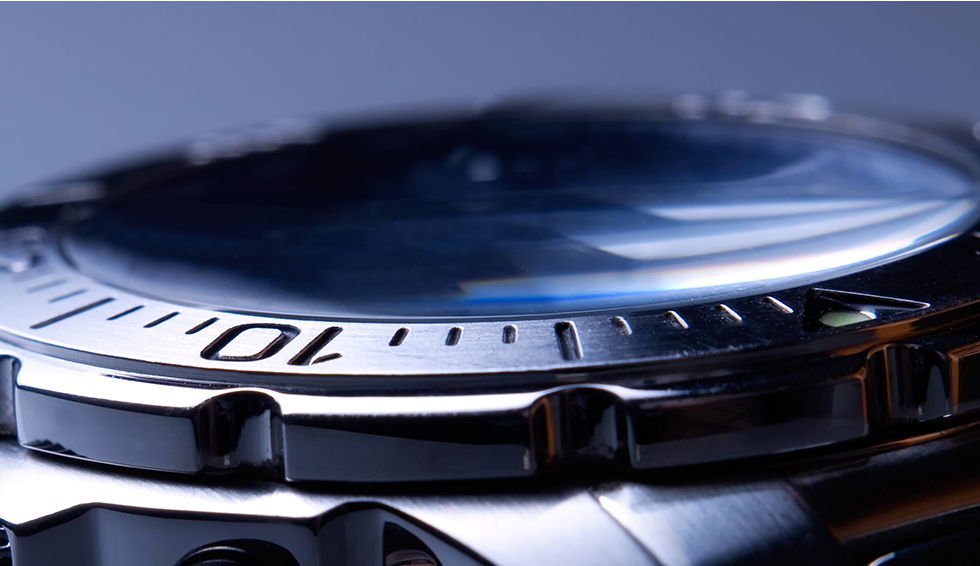
MORE THAN JUST VISUAL APPEAL
The bezel, which means “small moon” in French, is a ring that has been mounted to the face of a watch and can serve to spice things up with a sportier look. However, the bezel is something that shouldn’t be reduced solely to just its appearance. It’s a watch feature with purpose that can fulfill a range of everyday useful operations, right on your wrist. All you have to know is how to use it.
The good news is: its functionality is as simple as it is ingenious. It’s a feature that is easily understood and quickly finds acceptance from those that know to appreciate what it offers: the ability to conduct mathematical addition, subtraction, multiplication, and division calculations. Bearing this in mind, we’d like to present you with some of the different kinds of bezels and describe some of their functionality. Spend some time with us and venture onwards.
Divers’ Bezel
A divers’ bezel has a triangle at the 60 position on the minute track which is configured to the minute hand directly before a diver submerges underwater. It displays the amount of remaining dive time in minute increments. Are you wondering why exactly a bezel is necessary to “stop” the time, when there are chronographs available that make this configuration totally redundant? The reason is, that the pushers of most chronographs shouldn’t be operated underwater and the minute on the sub dial itself is difficult to read at dimly lit, lower water depths.
While early diving watch models once had bidirectional bezels, today they are only unidirectional in a counterclockwise direction. Deadly misunderstandings, confusion, and miscalculations concerning the remaining time are thus less likely because in the event of the diver misrotating the bezel, the diving time is fortunately configured for too short, rather than for too long a time.
Popular Divers’ With Unidirectional Bezels: Rolex Submariner, Omega Seamaster 300M
Time Zone Display
A bezel with a time zone display is often incorporated into watches with a GMT complication. They have a 24 hour scale and compared to diver’s’ bezels, GMT bezels are generally bidirectional. A second hour hand circumferences the dial only once per day and displays a second time zone on the bezel scale. For most modern GMT watches it’s possible when traveling out of country to set the GMT-hour hand to the local time, without ever having to stop the watch.
The second hour hand remains on the point of origin time, which is read off of the scale on the dial. It’s also possible to quickly ascertain a northern direction with the only requirement being that both watch hands must display the same time.
Popular GMT Models With Bidirectional Bezels That Configure Second Time Zones: Rolex GMT-Master II
Tachymeter scale
Many bezels have an additional tachymeter scale which displays the rate of speed on a pre-determined route (usually 1 kilometer). The scale is based on the simple, physical formula of Speed = Distance/Time. The distance that the second hand has covered, during which the predetermined route was traveled, displays the average speed during that space of time. The rate of speed in km/h can be read off of the bezel scale after a distance of one kilometer has been traversed.
The Breitling Navitimer has a bidirectional rotating bezel with scales on both its numbered rings as well as its dial borders. When both the outer and inner scales are synchronized with one another, then multiple types of calculations can be conducted e.g. currency conversion as well as deducing the average rate of speed.
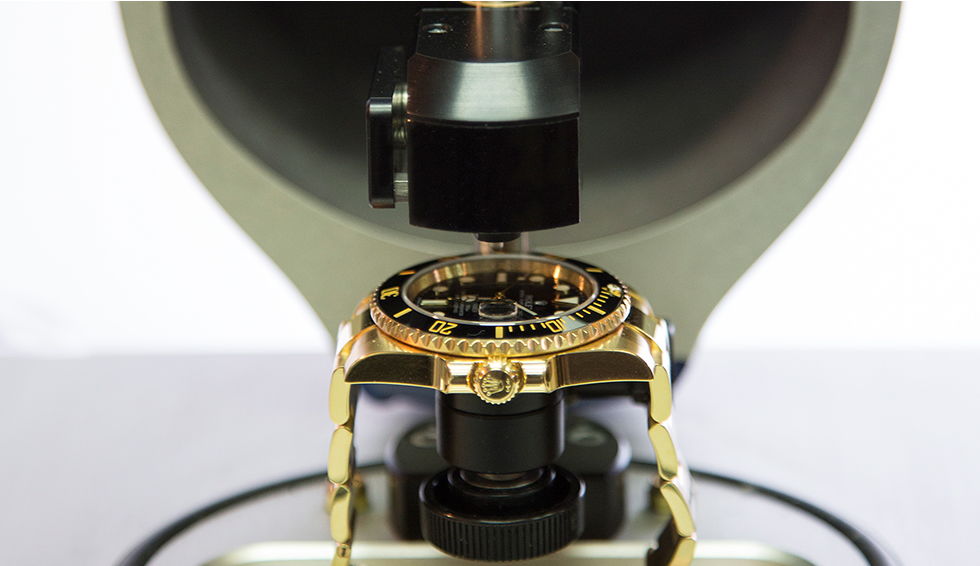
20,000 LEAGUES UNDER THE SEA?
The words “water resistant” lead many watch owners to believe, that their timepiece is completely waterproof. While a complete waterproofness is possible in principle – the tiny inscription should not falsely lead you to believe that this is the case. In the worst case this can end with a broken watch. Under high water pressure or when it is exposed to water for a long time, even a seemingly waterproof watch may let water in. How much water your watch can actually tolerate will be explained below.
How is Water Resistance Determined?
The water resistance of a watch is determined using a testing procedure, which is specified under DIN-Norm 8310. According to this standard, a watch is considered watertight if it successfully passed the test in mint condition. Important to know: in this testing procedure a static pressure is applied, which allows conclusions about the bar load capacity of a watch. If you actually go under water with your watch, the pressure increases due to movement as well as a water jet (e.g. in the shower). The watch is therefore exposed to a significantly higher load than during the test, when the pressure was simulated under lab conditions.
How Water Resistant is My Watch?
In the table below you will find a list of different readings and associated meter data with which the watches may subsequently be labeled. Next to that it is listed what this actually means for everyday use. Therefore only timepieces from a water resistance of 10 atm (100 meters) are suitable for water sports and for diving even 20 atm are recommended. Please note, however, that this is just a guideline and not universally applicable information.
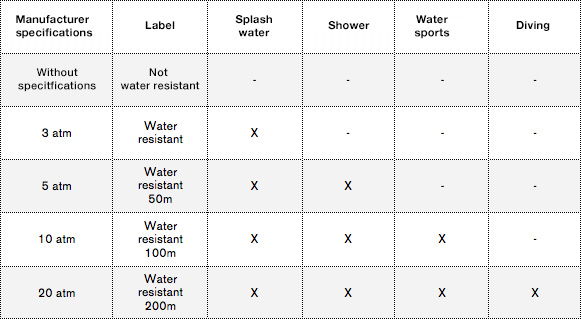

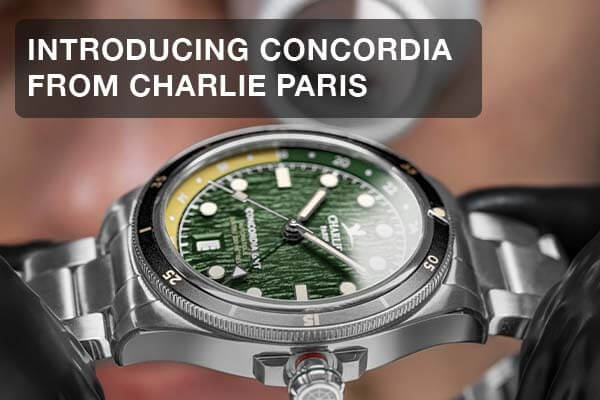

 EN
EN